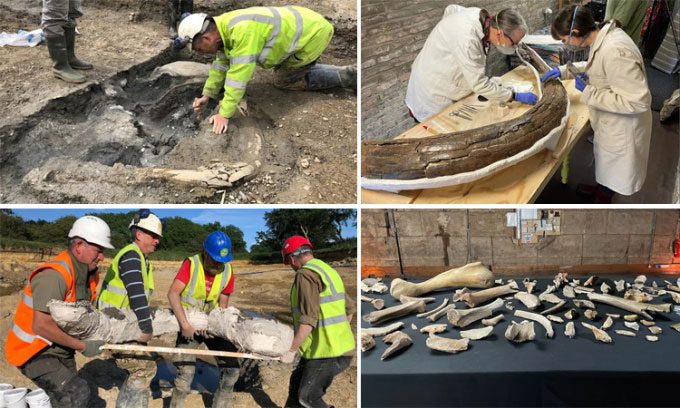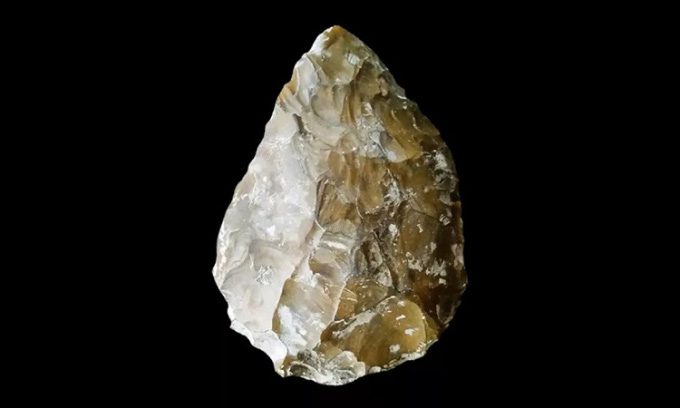Paleontologists have discovered five fossilized mammoth skeletons from the last Ice Age in southwestern England.

A large number of mammoth bones and tusks were found in England. (Photo: DigVentures)
The excavation work was completed last month at a quarry in Swindon, Wiltshire, located more than 110 km west of London. Radiocarbon dating indicates that the herd of elephants died 210,000 to 220,000 years ago, during a time when Neanderthals still inhabited what is now England.
In addition to the five mammoth skeletons, which include one juvenile, two adults, and two partially grown individuals, the research team also discovered numerous stone tools, such as hand axes and scrapers (used for cleaning animal hides).
“Finding mammoth bones is always extraordinary. This discovery is even more special because the bones are not only ancient but also well-preserved and located near Neanderthal stone tools,” said Lisa Westcott Wilkins, co-founder of the archaeological organization DigVentures.

The Neanderthal hand axe excavated near the mammoth fossil. (Photo: DigVentures)
According to Wilkins, early mammoths could grow up to 4 meters tall, but the two adult specimens found in Swindon are significantly smaller. This reduction in size is a sign that they were affected by the particularly cold weather during the last Ice Age.
In the near future, the research team aims to investigate why so many mammoths died in one location and whether Neanderthals hunted these animals or simply scavenged their remains.
“Through discoveries like this, we can gain a better understanding of life in England over 200,000 years ago,” emphasized Duncan Wilson, Chief Executive of Historic England, a historical conservation agency in England, highlighting the importance of the research.





















































